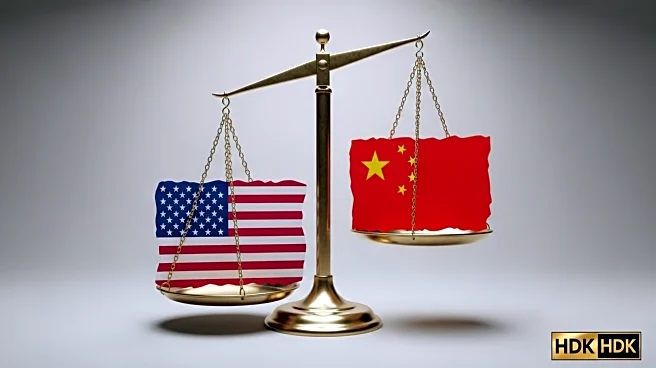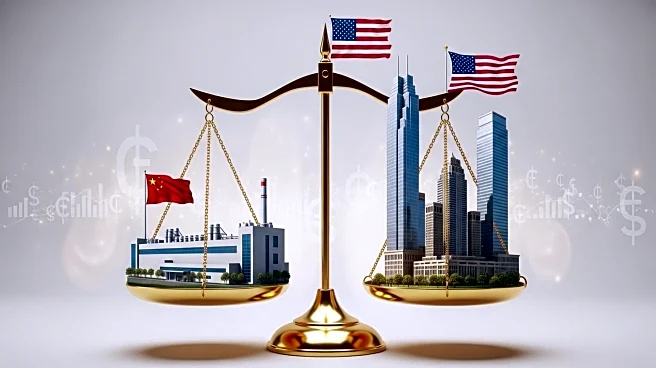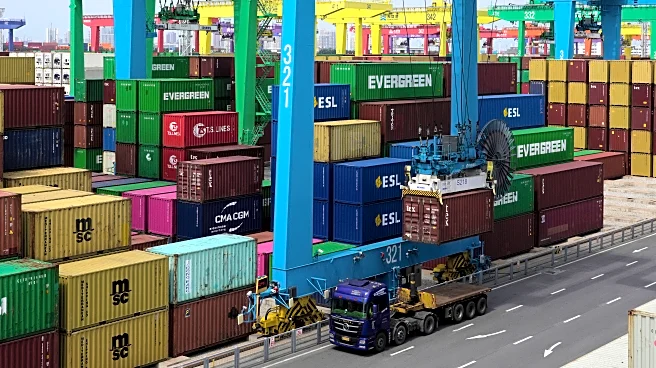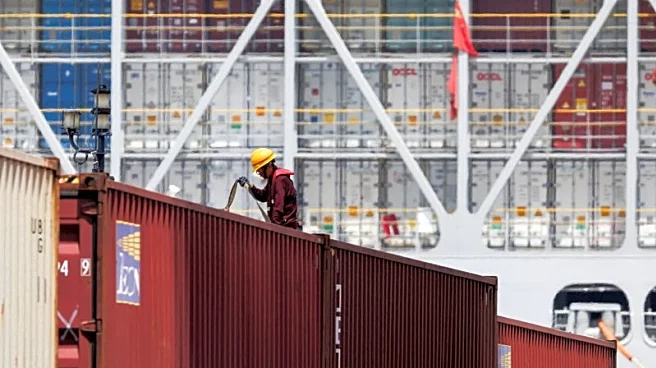What's Happening?
China's export growth has slowed to its lowest rate in six months, primarily due to reduced shipments to the United States amid ongoing tariff tensions. Official figures indicate that exports from China increased by 4.4% year-on-year in August, a decrease from July's 7.2% rise and below economists' expectations. Imports also saw a decline, growing by only 1.3% compared to a 4.1% increase in July. The reduction in exports to the US, which fell by 33%, contrasts with a 22.5% rise in exports to Southeast Asian countries. This shift is attributed to President Trump's unpredictable trade policies, including a recent delay in imposing sweeping tariffs on China. The US had threatened tariffs as high as 245%, while China had planned retaliatory tariffs of 125%. Despite these tensions, China's trade surplus increased to $102.3 billion in August, up from $98.2 billion in July.
Why It's Important?
The slowdown in Chinese export growth highlights the significant impact of US tariff policies on global trade dynamics. The reduction in exports to the US could lead to shifts in manufacturing strategies, as Chinese policymakers encourage manufacturers to explore alternative markets. This situation underscores the broader economic implications of trade tensions between the world's two largest economies, potentially affecting global supply chains and economic stability. The ongoing uncertainty in trade policies may also influence fiscal strategies in China, as analysts anticipate possible measures to boost domestic demand in the coming months.
What's Next?
The future of US-China trade relations remains uncertain, with potential for further tariff adjustments and retaliatory measures. Analysts are closely monitoring whether Chinese officials will introduce additional fiscal support to stimulate domestic demand in the fourth quarter. The evolving trade landscape may prompt businesses to reassess their strategies and supply chain dependencies, while policymakers in both countries navigate the complexities of international trade negotiations.
Beyond the Headlines
The tariff tensions between the US and China could have long-term implications for global trade patterns and economic alliances. As manufacturers seek alternative markets, there may be a shift in global supply chains, potentially affecting industries reliant on Chinese exports. Additionally, the trade dispute raises questions about the sustainability of current economic models and the potential for new trade agreements that could reshape international commerce.













